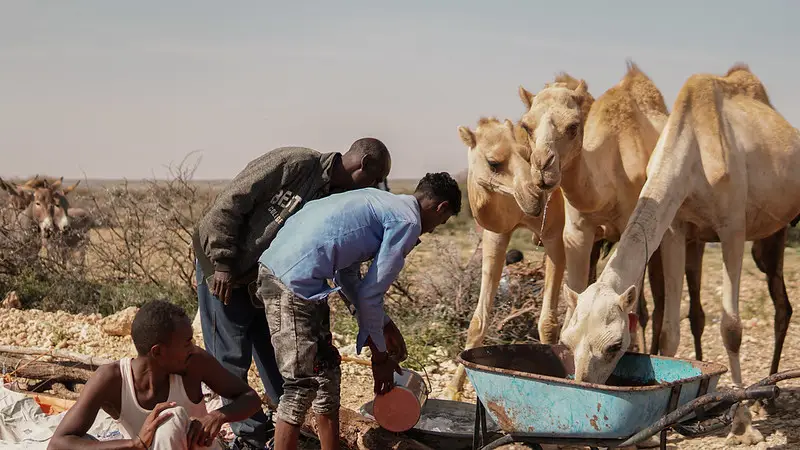
Beginning with the first Conference of the Parties (COP) in 1995, countries have met regularly to discuss how to stabilize and reduce the amount of greenhouse gas (GHG) in the atmosphere to avoid human-induced climate disasters. COPs are an opportunity for climate scientists, researchers, and implementers from around the world to come together to collaborate, share best practices, and advance solutions for achieving the goals of the United Nations Framework Convention on Climate Change (UNFCCC). This year’s COP will be held in Sharm El-Sheikh, Egypt from November 7-18, with a focus on implementing the climate commitments made to date and increasing the ambition of commitments.
For instance, at the last COP in Glasgow, Scotland, a Global Methane Pledge was announced by the U.S. and the European Union. The Pledge aims to reduce methane emissions by 30% by 2030 and has been ratified by over 100 countries. There was also a declaration to halt and reverse forest loss and degradation by 2030 signed by countries that contain nearly 91% of the world’s forests. Other commitments focused on increasing climate finance, phasing out coal, and targeting some of the biggest contributors to GHG emissions. This year’s COP will continue conversations on mitigation, adaptation, finance, and collaboration for greater climate action.
RTI International will join the negotiations as an official observer again this year. From my point of view, there are five factors that will shape this year’s COP.
1. COP27 is an Africa-led COP
First, Egypt, as this year’s COP president and host, represents an African perspective. In addition to highlighting their own national clean energy progress, they are also hoping to cement their place as an African climate leader by advocating for more financial and technical support for African countries to deliver on their nationally determined contributions and adapt to the impacts of climate change.
Necessity and demand are driving forces across the continent. Africa is already facing some of the worst effects of climate change, from higher temperatures, drought, flooding, and changing weather patterns. These changes are threatening lives and people’s abilities to provide for their families. However, all 54 countries in Africa contribute fewer GHG emissions than developed countries per capita. For example, Kenya uses 90% renewable energy and only contributes 0.2% to greenhouse gas emissions. Similarly, Egypt contributes less than 1%.
Nations across Africa are charting a different path, one that is greener and cleaner. Africa has become a laboratory of climate change innovations. For example, The U.S. Agency for International Development (USAID)'s Power Africa Off-grid project, implemented by RTI, is developing and scaling new technologies to increase energy access across Africa, especially in hard-to-reach, rural areas. With the ambitious goal of adding 60 million new power connections across sub-Saharan Africa by 2030, new business models and sustainable solutions that can scale are required. COP27 can help to attract additional resources and accelerate action in Egypt and across the African continent.
2. The U.S. has Made Big Climate Commitments
The United States is attending with renewed commitment and engagement to global partnership and combating climate change. The Biden Administration recently signed into law the most progressive energy bill in decades and launched the PREPARE plan, including a White House pledge to work to provide $3 billion in adaptation finance annually by 2024. It is the largest commitment ever made by the U.S. to reduce climate impacts on those most vulnerable to climate change worldwide.
Other U.S. government agencies have also demonstrated their commitment through long-term strategies and action plans. For instance, USAID launched a Climate Change Strategy that includes several ambitious goals including:
- Sequestering, reducing, or avoiding six billion metric tons of carbon dioxide through partnerships with countries to support activities.
- Supporting the conservation, restoration, or management of 100 million hectares (twice the size of California) with a climate mitigation benefit.
- Mobilizing $150 billion in public and private finance.
In addition to our implementation work, at RTI we are doing our part to track and reduce our own carbon footprint.
3. The Impacts of Climate Change are Being Felt Everywhere
This year has brought many severe weather-related disasters around the globe – drought in East Africa, unprecedented flooding in Pakistan, Europe’s hottest summer in 500 years, and historic hurricanes in North America, to name a few.
Climate action is urgent. COP27 is an opportunity to harness commitments to prevent, mitigate, and minimize the effects of future disasters.
I’ll be there alongside my RTI colleagues who are presenting a range of research findings from reducing methane gas to avoiding unintended consequences in our climate work. We plan to connect with other researchers, implementers, and leaders to help scale proven climate solutions that will reduce emissions and build people’s resilience to climate change.

Pastoralists provide water to camels during drought in Somalia. Photo credit: iZone Productions for USAID.
4. There is an Increased Focus on Adaptation & Capacity Building
While mitigation of GHG emissions remains essential, there has been a growing recognition of the critical need to adapt to and build resilience to a changing climate on a global scale. This will be a major focus of COP27, with calls to increase funding and build capacity, especially among the most vulnerable, to adapt to the changing climate. USAID has committed to improving the ability of 500 million people to adapt to climate change in its climate change strategy.
Scaling climate adaptation initiatives that are evidence-based and proven to be effective is a critical step. It is also important that these solutions are based on science and research. RTI helped NASA assess the impact of flood early warning systems to mitigate damages for vulnerable populations that experience river flooding in Bangladesh. Assessments like this ensure that vulnerable populations are not displaced by floods and help them prepare for changing weather patterns that may impact their livelihoods.
We also need to invest in scalable solutions that increase resilience to climate change for the most vulnerable. For example, RTI partnered with USAID on an innovative camel leasing program that helped build the resilience of farmers and local dairies in Somalia, a country often plagued by severe droughts resulting in livestock loss. This program created a mutually beneficial model that gave the pastoralist short-term income to temporarily lease their camels to local dairies and helped dairies increase their camel milk production. The model supported the pastoralist's livelihoods, local businesses, and kept the camels well fed. As changing weather patterns continue to cause severe droughts in many parts of the world, we need more innovative and scalable solutions like this one that create opportunities to increase resilience in local communities.
5. COP27's Work Plan is Focused on Implementation
This year’s COP agenda will focus on the tangible work needed to achieve the commitments made to date and to further increase ambition to achieve progress by 2030 that will put us on a 1.5°C pathway. Since attending my first COP in 2003, I’ve seen increased engagement from countries and various stakeholders in taking climate action. In 2003, I was one of 5,000 observers, in stark contrast to the 40,000 people who attended COP26 last year.
As both a global research institute and a leading international development organization active in over 84 countries, RTI has data, analytical capabilities, and global insights to help our partners plan for various scenarios. I’m excited to be part of RTI’s delegation this year and will attend with my own personal mission to help deliver the core goals of the UNFCCC by sharing my experience and being open to new collaborations. I challenge other attendees to do the same.
Are you bringing money, knowledge, capacity, or data to the table? Which of those do you need to help push forward your countries’, companies’, and personal goals? How will you make progress getting them? How can those of us who are implementers design projects that can support the international community’s larger climate goals? How can you be part of the global solution? In fact, write down three things you will “do.”
This is an implementation COP, after all.
Learn more about RTI’s efforts to combat climate change at our RTI Center for Climate Solutions.
